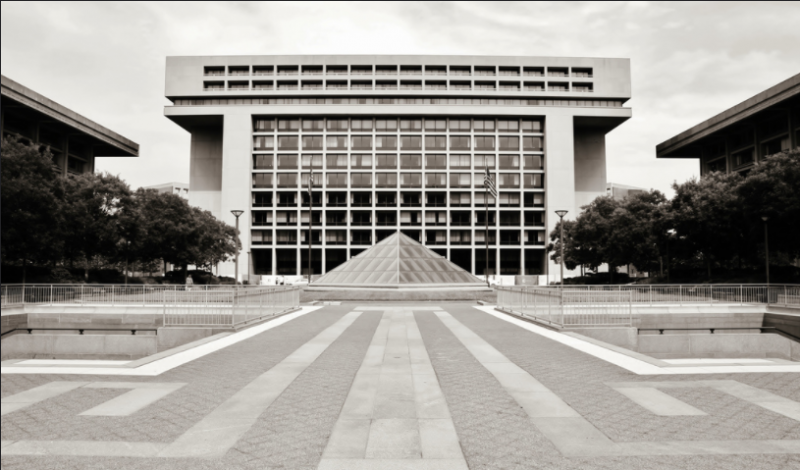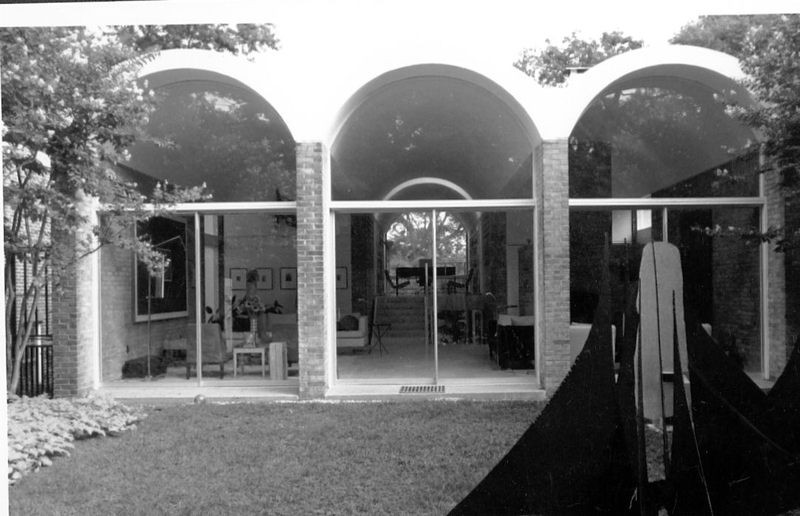I. M. Pei, designer of “notorious” DC buildings, turns 100 today

Pei-designed L'Enfant Plaza. Image by JY O’Reilly on Flickr.
Love him or hate him, prominent architect I. M. Pei turns 100 today. Active since the middle of the last century, Pei gave DC a number of its notable (some might say notorious), buildings ranging from the East Wing of the National Gallery of Art to L’Enfant Plaza.
Pei is known for his modernist style and use of geometric shapes in many of his designs. He has designed numerous minimalist skyscrapers, ranging from the Kips Bay Towers in New York to the John Hancock Tower in Boston, as well as cultural institutions that include the Louvre's iconic pyramid in Paris and the Rock and Roll Hall of Fame in Cleveland. His style has matured throughout his career.
“Architecture is like a tree,” he told The Washington Post in 1978. “It grows and matures and branches out. I am part of that tree, of that movement, not starting, or ending, or following anything.”
Pei won the Pritzker Architecture Prize, arguably the architecture world's highest honour, in 1983.
In DC, the building that probably shows Pei at his best is the National Gallery’s East Wing that opened in 1978.
East Wing
The East Wing of the National Gallery is a humble, modern structure consisting of two intersecting triangles joined by an atrium. It lacks much of the ostentatious ornamentation of neoclassical Washington.
The East Wing of the National Gallery. Image by Pei Cobb Freed & Partners.
“The building occupies a trapezoidal site… it responds to its context by allowing the site's geometries to determine the form of the building,” wrote The New York Times in 1978. “Thus the trapezoid, which was sliced in two to divide the structure into a public museum, the larger triangle; and a study center, the smaller one.”
The building, which is connected to the West Wing of the National Gallery by an underground passageway, is located on the north side of the Mall between 3rd Street and 4th Street.
The East Wing seen from above, flanked by the US Capital and the neoclassical West Wing of the National Gallery. Image by Pei Cobb Freed & Partners.
L'Enfant Plaza
Pei designed L'Enfant Plaza and the three towers that surround it for developer William Zeckendorf. The modernist concrete-scape is from an era when he worked on a number of large urban redevelopment projects, including Kips Bay and Society Hill in Philadelphia.
The pyramid at the center of L'Enfant Plaza with two of Pei's high rises in the background. Image by Chris Kelly on Flickr.
L'Enfant Plaza is one of Pei's less loved projects. It faces many of the same criticisms that are lodged against brutalism in general, from lack of user friendliness to big and bold concrete shapes.
Town Center Towers
The Town Center Towers on 3rd Street SW consist of four residential towers split up into two complexes, Town Center East and Town Center West. They opened in 1961.
Pei's Town Center East in Southwest DC. Image by Farragutful on Wikimedia.
They are described as some of “Washington's best examples” of international style and mid-century modernism, according to tthe National Register of Historic Places entry on Town Center East. The East complex was landmarked in 2013.
Slayton House
The William L. Slayton House was one of just three houses that Pei is known to have designed, according to its National Register of Historic Places entry. Located in North Cleveland Park, the international style house has a distinct triple-vault concrete roof and “transparency” owing to its all-glass front and rear walls.
The Slayton House in North Cleveland Park. Image by DC Historic Preservation Office used with permission.
